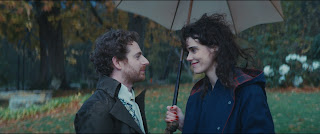Movie Review by Sergio Martinez
This film, directed by Warwick Thornton, is set in a desert
region of Australia in the 40s of the last century and touches on a theme, with
which, here in Canada, there are some painful coincidences. In the plot's background, there is the eagerness of the authorities to assimilate the
indigenous population, first, by stripping them of their own cultural identity,
language and even their way of relating to reality. In this context, the “Chief Protector of Aborigines” figure took on special importance. These officials had the authority to remove indigenous children from their families
in order to assimilate them into the white culture.
 |
| He will be known only as the New Boy (Aswan Reid) |
Soon, the New Boy will mark his difference with the other
children, aboriginal boys who have already been Christianized, and with the
environment of the site itself. The culture clash will become apparent on
several occasions, one in which the New Boy arrives with snakes, part of his
normal relationship with nature, but symbols of evil in Christian belief. This and other occurrences will put Sister
Eileen in check when her own faith is shaken by the newcomer's healing powers
and his different understanding of the images of the local church.
 |
| Sister Eileen (Cate Blanchet) sees her faith shaken by the presence of the New Boy |
In his introductory statement to the film, the director said, “Aboriginal people are generally happy to embrace Christianity alongside their own spiritual beliefs, but it doesn’t happen the other way around. Christianity must conquer.” That is well portrayed in the film when the New Boy speaks for the first time and when, after being baptized, his life will take on a different character. In a way, this is also an analogy to what happens with the culture of the peoples assimilated by “white civilization”. With its power, the colonial world displaces the old images and beliefs, as well as their magical powers.
 |
| Sister Mum (Deborah Mailman) and George (Wayne Blair) |
Running time: 96 min.















